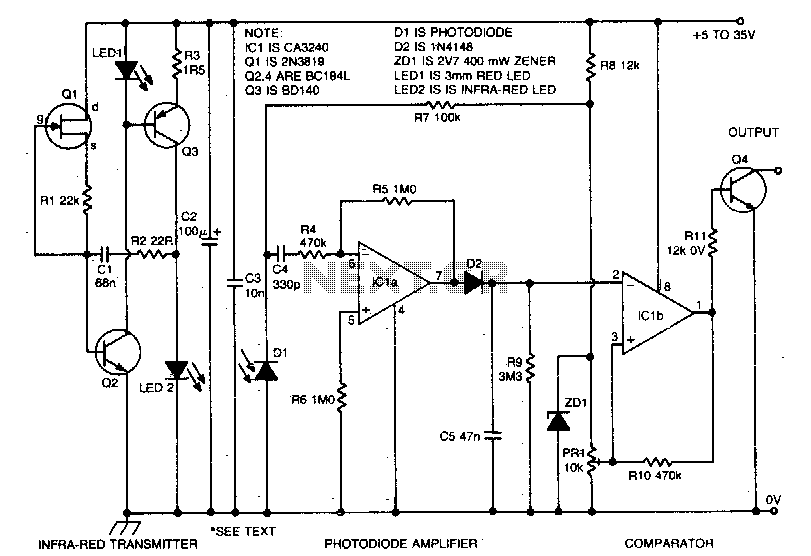
mobile bug detector

This portable, pocket-sized mobile transmission detector can detect the presence of an activated mobile phone from a distance of one and a half meters.
The mobile transmission detector is designed for convenience and portability, making it an ideal tool for various applications, including security and privacy monitoring. The device operates by utilizing radio frequency (RF) detection technology, which allows it to sense the electromagnetic signals emitted by active mobile phones.
The circuit typically consists of a high-gain RF amplifier to boost the weak signals received from mobile devices, followed by a demodulation stage that converts the RF signals into audible alerts. An integrated microcontroller may be employed to process the signals and control the output indicators, such as LED lights or audible alarms, which inform the user of the detected mobile phone's presence.
Power supply for the device can be provided by a compact battery, ensuring it remains lightweight and easy to carry. The PCB layout should be designed to minimize interference and optimize signal reception, with careful consideration given to the placement of components to enhance sensitivity and range.
Overall, the mobile transmission detector serves as a practical tool for individuals seeking to monitor mobile phone activity in various environments, providing a simple yet effective means of detection within a specified range.his handy, pocket-size mobile transmission detector can sense the presence of an activated mobile phone from a distance of one-and-a-half metres. So it ca.. 🔗 External reference
The mobile transmission detector is designed for convenience and portability, making it an ideal tool for various applications, including security and privacy monitoring. The device operates by utilizing radio frequency (RF) detection technology, which allows it to sense the electromagnetic signals emitted by active mobile phones.
The circuit typically consists of a high-gain RF amplifier to boost the weak signals received from mobile devices, followed by a demodulation stage that converts the RF signals into audible alerts. An integrated microcontroller may be employed to process the signals and control the output indicators, such as LED lights or audible alarms, which inform the user of the detected mobile phone's presence.
Power supply for the device can be provided by a compact battery, ensuring it remains lightweight and easy to carry. The PCB layout should be designed to minimize interference and optimize signal reception, with careful consideration given to the placement of components to enhance sensitivity and range.
Overall, the mobile transmission detector serves as a practical tool for individuals seeking to monitor mobile phone activity in various environments, providing a simple yet effective means of detection within a specified range.his handy, pocket-size mobile transmission detector can sense the presence of an activated mobile phone from a distance of one-and-a-half metres. So it ca.. 🔗 External reference





